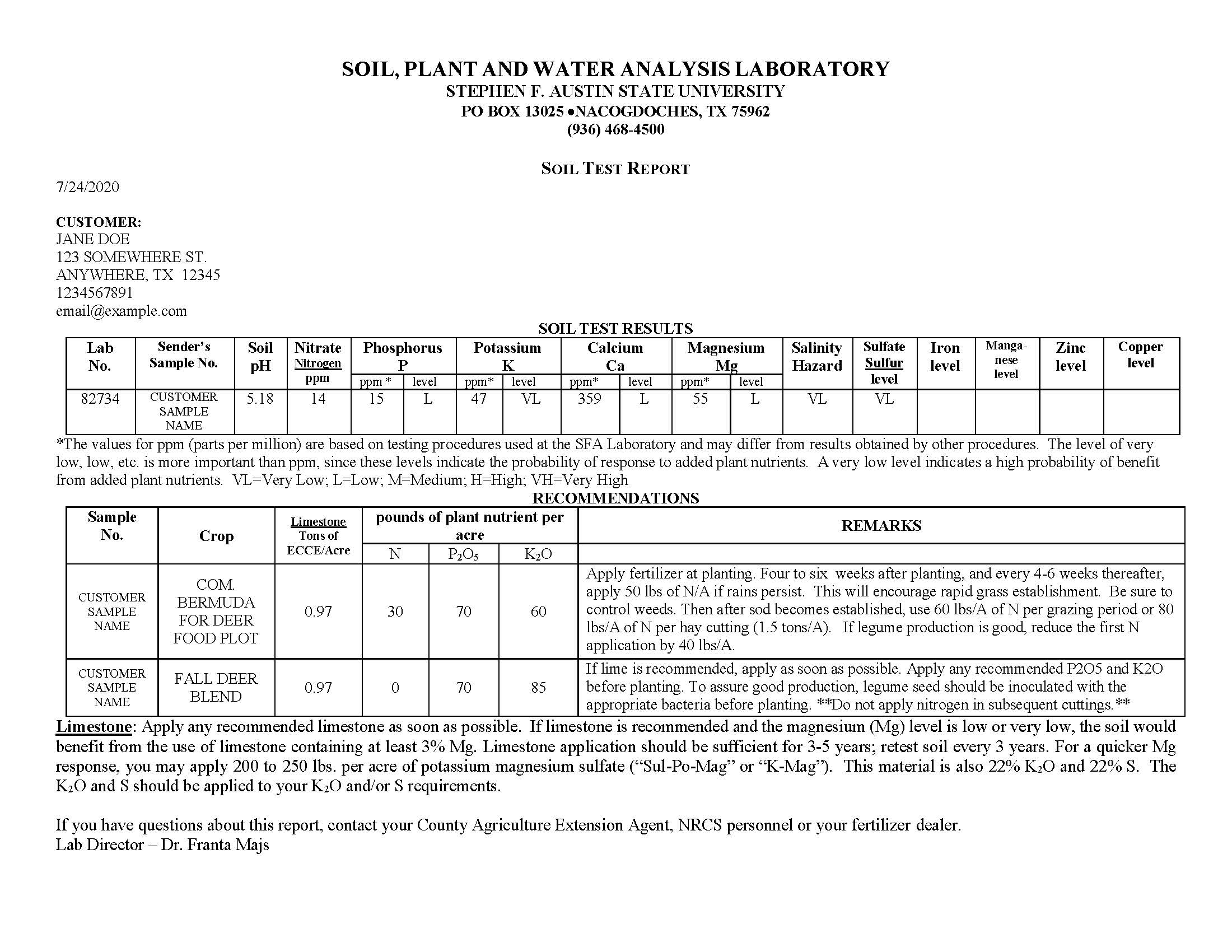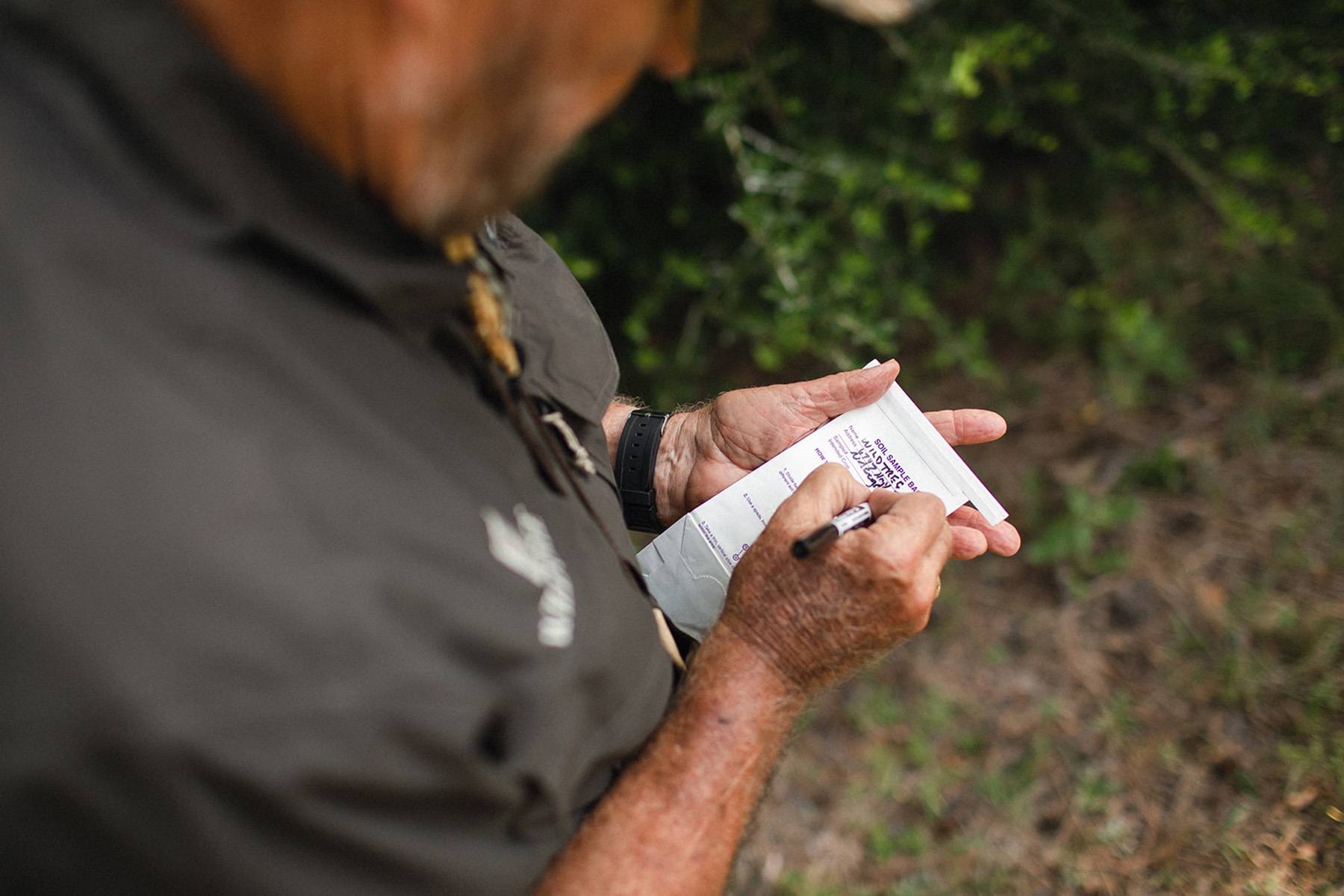OK, you have dutifully collected your soil samples, sent them off for analysis, and now you have a very complicated report to interpret! This article is aimed at explaining what all the numbers and charts mean, and how to implement their recommendations. Each soil laboratory will have a slightly different way of reporting their findings and recommendations, depending sometimes on what you wanted them to look at. There are basically two types of reports—standard and complete (they will have different names). A standard report usually includes estimated values of basic macronutrients and some micronutrients in your soil sample. Macronutrients are not “big” nutrients, but the ones plants use in large quantities; as opposed to micronutrients which are used in very small amounts. Examples of macronutrients are Nitrogen (N), Phosphorus (P), Potassium (K), Calcium (Ca), and Magnesium (Mg). Micronutrients include Zinc (Zn), Copper (Cu), Manganese (Mn), and Iron (Fe). Just because a nutrient is used in small quantities does not mean it is less important; it just serve the plants’ needs at smaller levels. An complete report will include a host of other nutrients and factors that affect soil fertility. An example is Boron (Bo), an element used in very small quantities yet very important to plant growth and reproduction. Soils are often Bo deficient, and the landowner does not even know it!
We have attached a copy of a standard report from our Soils Laboratory at Stephen F. Austin State University. It contains two boxes, with divisions. The first gives the measured pH of the sample, and the amounts of N, P, K, Ca and Mg, all in parts per million (ppm). The box also presents the potential salinity hazard and sulfate level; but, does not include Fe, Mn, Zn and Cu, because this is just a standard test. If we had requested the complete test, there also would be additional nutrients such as Bo.
The pH is 5.18, meaning that it is about twenty times more acid than neutral. Plants such as cereal grains, can still do relatively well at this pH, but one closer to 7 would be best. So, later there probably will be a recommendation for lime application. N concentration is 14 ppm, not all that bad, but still lacking. The optimum level is 20-30 ppm. P is low, something we often see in soils; K is very low, often due to its high solubility in water (rainfall); Ca is low (relating back to pH; Mg also is low; and, the salinity hazard is very low. The latter is good, since if there is a high salinity hazard, you may not be able to grow much or have to resort to saline tolerant species.

The next block presents what you really want to know as a land manager: What do you need to add to your soil? When you submit the sample, you are asked what the expected crop will be? Examples are Bermudagrass for pastures, cereal grains and legumes for food plots; and fruit trees for deer orchards. In this case, the laboratory is recommending an application of about a ton (2,000 lbs) of lime per acre for a Bermudagrass pasture, and the same for a deer food plot. If Mg is low to very low, you will be advised to spread a limestone with 3% Mg. That is if you have six months before you plant; so if you want faster results, you should apply an additional 200-250 lbs/ac of potassium magnesium sulfate. It is sold as either “Sul-Po-Mag” or “K-Mag.”
For the Bermudagrass pasture, the lab recommends applying 30 lbs of N, 70 lbs of P2O2 and 60 lbs of K2O per acre. The deer food plot (clover) recommendation is 0 lbs of N, 70 lbs of P2O2 and 85 lbs of K2O per acre. We often recommend coming back at mid-season with a supplemental application of nitrogen for cereal grains, grasses and non-legume crops. Legumes manufacture their own nitrogen and do not need supplementation.
Now we need to discuss how you go about doing what they recommend? Simple fertilizers come in bags marked with numbers such as 13-13-13, referring to N, P and K. The generally is interpreted that this means the bag contains 13% N, 13% P and 13% K. There is a much more complicated explanation, but we will limit our discussion to these percentages being correct. Since a 50 lb bag of fertilizer, in this case, really has only 13% (50X0.13= 6.5 lbs) of N, how many pounds do we have to spread to get the recommendation for 30 lbs per acre of N? The answer is about 5! Now, it gets complicated! The Bermudagrass recommendation calls for 30 lbs of N, 70 lbs of P and 60 lbs of K! That means we would need 11 bags to meet the P level, and 9 bags for the K level, and we would not be correct at any level! You can see why some landowners just guess and put out a set number of pounds each time. In our early days of research and management, we could call up a custom fertilizer plant and ask for a specific formula of fertilizer. Only in predominantly agricultural areas can that be done today. Sadly we now just formulate our own mix that “approximates” the recommendation. That takes some frustrating calculations, but it can be done. By buying the nutrients in separate bags, such as 33-0-0 or 0-40-0, or 0-0-60, we can mix and match to meet the requirement. We use a cement mixer to do this, increasing the time it takes to apply fertilizer; yet, well worth it! Or, you can just go over the plot three times, each time with a different fertilizer. In this example, we would put out 2 bags of 33-0-0; 2.5 bags of 0-40-0; and 2 bags of 0-0-60per acre. It really does not hurt to round off, as we did with the N application, as long as the deviation is not too great. Clear as mud? If you love math, you can work out several solutions to the problem, depending on your inclination to do so! If all else fails, please ask your soils laboratory director, and he/she may be willing to provide the correct answers. Yet, we are not be flippant with this aspect of growing crops and trees for deer; it is very important.
Now, let’s turn to how you spread it. The best way is with a spin type spreader mounted on a tractor PTO. Spreaders come with an instruction table that gives you the settings for so many pounds per acre. So, the next step is to calculate how many acres you are going to fertilize; and that is the topic of another article.


